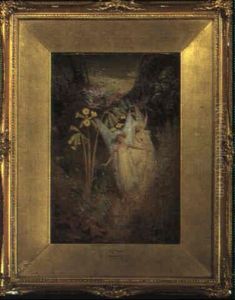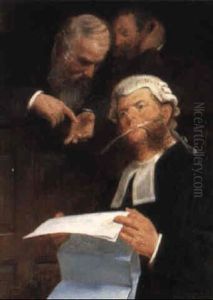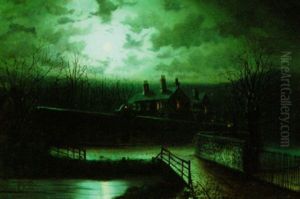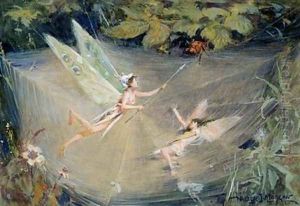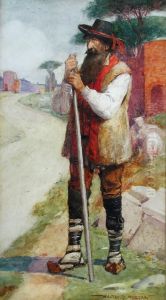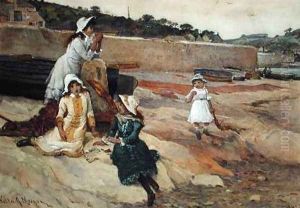Walter Jenks Morgan Paintings
Walter Jenks Morgan, born in 1847 in London, England, was a prolific British artist known for his watercolor paintings and illustrations. His artistic journey began at a young age, leading him to study at the prestigious Royal Academy Schools, a foundation that has nurtured many of Britain's most renowned artists. Morgan's education there laid the groundwork for his development as a skilled painter and illustrator, allowing him to refine his techniques in watercolor and other mediums.
Morgan's professional career took off in the late 19th century, a period that was particularly rich in the evolution of British art. He became well-known for his landscapes and cityscapes, often capturing the essence of British and European scenery with a particular focus on the play of light and shadow, which became a hallmark of his work. His ability to evoke mood and atmosphere in his depictions of urban and rural settings was admired by both his contemporaries and art critics of the time.
In addition to his landscapes, Morgan was also renowned for his illustrations. He contributed to various publications of the era, including books, magazines, and newspapers, where his illustrations helped to bring stories and articles to life. His work in this area demonstrates his versatility as an artist and his ability to adapt his style to suit the narrative needs of the text he was illustrating.
Throughout his career, Walter Jenks Morgan exhibited his work at various institutions, including the Royal Academy of Arts, an institution that was central to the British art scene. His contributions to the art world were recognized by his peers, and his works were collected by art enthusiasts in Britain and beyond.
Morgan's legacy as an artist is marked by his mastery of watercolor and his contribution to the illustration of literary works. His paintings and illustrations remain a testament to his skill in capturing the subtleties of light and the nuances of the landscapes he portrayed. Walter Jenks Morgan passed away in 1924, leaving behind a body of work that continues to be appreciated by art historians and collectors for its beauty and technical proficiency.



